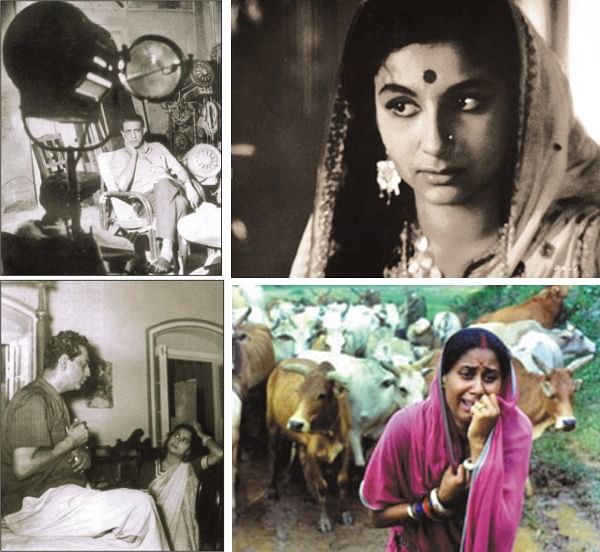Satyajit Ray: Remembering the doyen
Talking about the great late Indian filmmaker Satyajit Ray, his famous Japanese counterpart Akira Kurosawa said, "The quiet but deep observation, understanding and love of the human race, which are characteristic of all his films, have impressed me greatly...I feel that he is a 'giant' of the movie industry."These words have an undeniable ring of truth as one looks back at Ray's life (May 2, 1921-April 23, 1992) and film career. Go back to 1955 and his first film Pather Panchali (Song of the road) the first of a trilogy, followed by Aparajito (The unvanquished) and Apur Sansar (The world of Apu). These films have a touch of his unique blend of intellect and emotion. Who can forget the stark lives of Apu and his family? The son of a poor Brahmin poet and priest, Apu witnesses the struggle for existence of his family against the milieu of a famine and his own growing up years. Around the same time, Ray made two other landmark films: Devi (The goddess) and Jalsaghar (The music room). Ray's later films touched more contemporary themes. In these ranks were Nayak in 1966, Pratidwandi in 1970, Seemabaddha in 1971, Jana Aranya in 1975 and Shatranj Ke Khiladi (The chess players) in 1977. The last film was based on a short story by renowned Hindi writer Premchand and brought him to the notice of the mainstream Indian film-making audience. Other films included Jalsaghar (1958), Teen Kanya (1961), Charulata (1964), Ashani Sanket (1973), Ghaire Baire (1984) and Ganashatru (1989). His last film was Agantuk (1991) As Ray went from strength to strength, he was feted overseas with awards at Venice, Cannes, Locarno and Berlin. In 1992 he received a Lifetime Achievement Award "in recognition of his rare mastery of the art of motion pictures and for his profound humanitarian outlook, which as had an indelible influence on filmmakers and audiences throughout the world." This is not an overstatement--Ray's films were studied in film schools and avidly watched by upcoming filmmakers. Prominent Indian directors such as Kumar Shahani, Mani Kaul, Adoor Gopalakrishnan and Shyam Bengal drew inspiration from Ray. Other honors that came Ray's way were Legion d'Honneur, France and Bharatratna (Jewel of India). Despite his considerable talent, Ray was never far from controversy. In Bengal, particularly Calcutta, where Marxism was the order of the day, he was labelled as a representative of bourgeois culture. Even his friend Chidananda Dasgupta wrote that Ray did not accurately capture the political milieu of the turbulent 1960s and 1970s. In Dasgupta's words, the latter failed to show a greater concern for the "Calcutta of the burning trains, communal riots, refugees, unemployment, rising prices and food shortages.." Today such criticisms seem far off the mark. Says an internet article, "It is now easier to recognise Ray's films as politically nuanced and Ray never made the mistake of embracing unabashedly, the nationalistic interpetation of Indian history. Ray tackled the difficult subject of the Bengal famine of 1943, for instance, with great sensitivity." Even in death, the great director continues to remain the most talented Bangalee filmmaker. His films captured rural as well as urban Bangalee lifestyle in its truest form. Compiled by Cultural Correspondent
|

Clockwise from Top-left: Ray in his studio, Sharmila Tagore in Devi, late Smita Patil in Sadgati (a short film by Ray) and Ray directing Madhavi Mukherji in Charulata. Photo Courtesy: Amar Chokhey Satyajit Ray by Sayeeda Khanam |